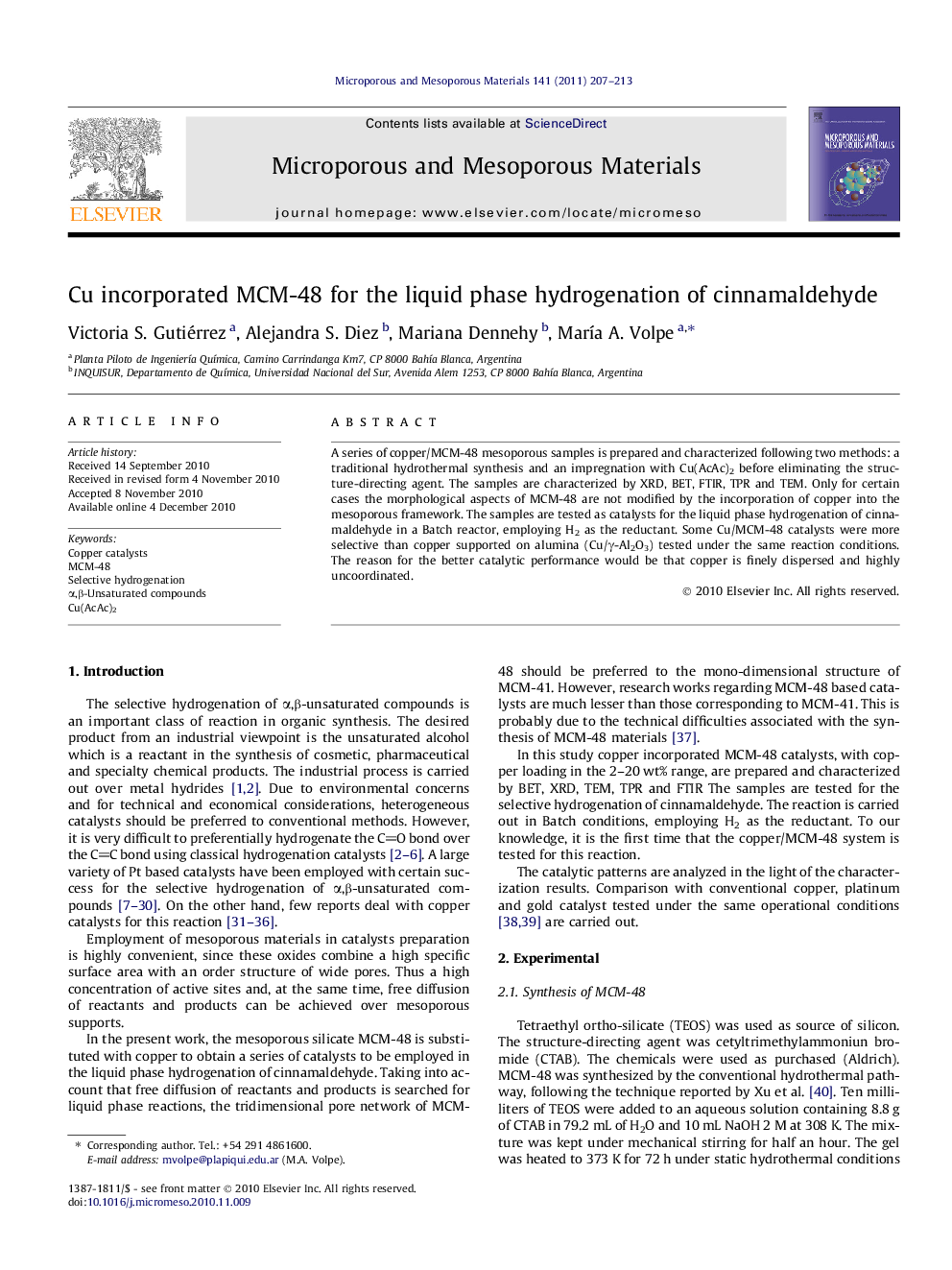| Article ID | Journal | Published Year | Pages | File Type |
|---|---|---|---|---|
| 75442 | Microporous and Mesoporous Materials | 2011 | 7 Pages |
A series of copper/MCM-48 mesoporous samples is prepared and characterized following two methods: a traditional hydrothermal synthesis and an impregnation with Cu(AcAc)2 before eliminating the structure-directing agent. The samples are characterized by XRD, BET, FTIR, TPR and TEM. Only for certain cases the morphological aspects of MCM-48 are not modified by the incorporation of copper into the mesoporous framework. The samples are tested as catalysts for the liquid phase hydrogenation of cinnamaldehyde in a Batch reactor, employing H2 as the reductant. Some Cu/MCM-48 catalysts were more selective than copper supported on alumina (Cu/γ-Al2O3) tested under the same reaction conditions. The reason for the better catalytic performance would be that copper is finely dispersed and highly uncoordinated.
Graphical abstractDependence of the conversion of cinnamaldehyde (–) and of the selectivities to cinnamyl alcohol (), to hydrocinnamaldehyde (), and to hydrocinnamyl alcohol () on time for copper (2 wt%) incorporated on MCM-48.Figure optionsDownload full-size imageDownload as PowerPoint slideFigure optionsDownload full-size imageDownload as PowerPoint slideFigure optionsDownload full-size imageDownload as PowerPoint slideFigure optionsDownload full-size imageDownload as PowerPoint slideResearch highlights► Copper species supported on MCM-48 are active for the hydrogenation of CO bond during cinnamaldehyde hydrogenation. ► Impregnation of MCM-48 before removing the structure-directing agent with Cu(AcAc)2 leads to a catalysts with high copper loadings. ► Copper on MCM-48 is more selective than Copper on traditional supports (γ-Al2O3).
